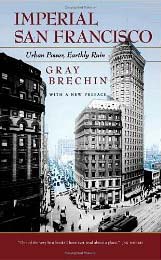News & Tall Tales. 1800s.

California Gold
February 15, 1849, Burlington Hawk-Eye, Burlington, Iowa
California Gold
 |
| Sunday Morning in the Mines |
California gold furnishes the common coin of conversation now-a-days. Among the current anecdotes of the day, we have heard one of a young gentleman, who after a long residence among the gold diggers (who, it seems, equal Fallstaff's regimen for lack of linen) had only one article left that had any pretensions to the name of shirt, and this he hired out at the rate of $5 dollars an evening for weddings and other festivities.
We are told, also that the fortunate discoverer of a very large lump of gold, finding it top heavy for immediate transportation, carefully painted it of a dull copper color to deceive other adventurers until he should have time to carry it off.
N.Y. Express, New York
CALIFORNIA GOLD -- APPALLING MURDERS.
A letter has been received by a respectable mercantile firm in the city, detailing a horrible butchery already occasioned by Californian gold.

A ship, called the Amelia, sailed from St. Francisco with gold, to purchase a cargo of silks in China. In crossing the Pacific Ocean, three miscreants of the crew, during a night watch, stole upon the mate, murdered, and threw him overboard; after which they successively assassinated the master, supercargo, and an English passenger named Cooke, whose wife was on board.
The murderers then divided the Californian gold amongst themselves, and the remaining part of the crew, who, it would seem, were ignorant of the whole affair, till called upon to receive their share of the plunder. Soon afterwards the murderers got drunk and fell asleep, when the rest of the crew agreed to kill them and to restore the ship to her owners.
Accordingly, the ship's carpenter chopped off the heads of the three murderers with his axe, and their bodies were thrown into the ocean. The ship was then taken to Honohulao, one of the Sandwich Islands, and given up to the British Consul, being navigated thither entirely by a couple of apprentice lads, who alone possessed sufficient skill for the purpose.
Gold Dust and Gunsmoke
Tales of Gold Rush Outlaws, Gunfighters, Lawmen, and Vigilantes
John Boessenecker
The Trials of Laura Fair: Sex, Murder, and Insanity in the Victorian West
Carole Haber On November 3, 1870, on a San Francisco ferry, Laura Fair shot a bullet into the heart of her married lover, A. P. Crittenden. Throughout her two murder trials, Fair's lawyers, supported by expert testimony from physicians, claimed that the shooting was the result of temporary insanity caused by a severely painful menstrual cycle. The first jury disregarded such testimony, choosing instead to focus on Fair's disreput able character. In the second trial, however, an effective defense built on contemporary medical beliefs and gendered stereotypes led to a verdict that shocked Americans across the country. Carole Haber probes changing ideas about morality and immorality, masculinity and femininity, love and marriage, health and disease, and mental illness to show that all these concepts were reinvented in the Victorian West.
On November 3, 1870, on a San Francisco ferry, Laura Fair shot a bullet into the heart of her married lover, A. P. Crittenden. Throughout her two murder trials, Fair's lawyers, supported by expert testimony from physicians, claimed that the shooting was the result of temporary insanity caused by a severely painful menstrual cycle. The first jury disregarded such testimony, choosing instead to focus on Fair's disreput able character. In the second trial, however, an effective defense built on contemporary medical beliefs and gendered stereotypes led to a verdict that shocked Americans across the country. Carole Haber probes changing ideas about morality and immorality, masculinity and femininity, love and marriage, health and disease, and mental illness to show that all these concepts were reinvented in the Victorian West.
Vigilantes in Gold Rush
San Francisco
Robert Senkewicz S.J.
Stories of San Francisco raucous early days.
Against the Vigilantes:
The Recollections of
Dutch Charley Duane
Excerpted from Wild West Magazine, June 2000:
The two largest movements of vigilantism in the American West occurred in 1851 and 1856 San Francisco during the California Gold Rush. Not in favor of the Committee was Charles P. ("Dutch Charley") Duane. In '51, the Committee of Vigilance banished Dutch Charley from San Francisco, saying he would face a penalty of death if he returned. Seems he had been involved in at least seven brawls, including the beating and shooting of a French actor named Amedee Fayolle. When the vigilantes disbanded that fall, Duane was soon back in town and making trouble again. During the next several years, he was involved in at least half a dozen violent incidents. When the San Francisco Committee of Vigilance formed in 1856, it targeted Dutch Charley and once again warned him to leave and never to return under penalty of death.
However, Dutch Charley was also a fearless fireman. He played a courageous role in saving much of the St. Francis Hotel from a fiery fate in October 1853 and, less than two months after that, was elected chief engineer of the fire department. When the heat died down after his 1856 banishment from San Francisco, Duane returned to town early in 1860 and, within weeks, was honored during a fire department meeting. Dutch Charley would stay put, become involved in politics again (he had once been a chief henchman for the politically powerful David C. Broderick), and outlast most of his drinking buddies.
Dark and Tangled Threads of Crime: San Francisco's Famous Police Detective, Isaiah W. Lees
William B. Secrest.f
He came to California with the great Gold Rush, but instead of riches, Isaiah W. Lees discovered his great talent for solving crimes and catching criminals. He captured stage robbers in Missouri, tracked con men to New York and caught the notorious eastern bank robber, Jimmy Hope in the middle of a San Francisco heist.
San Francisco in the 1850’s, was the gateway to the gold fields, a city filled with adventurers, outlaws, con men and desperadoes of every description. In 1853 Isaiah Lees was appointed the first Chief of Detectives on the new Police Force and during nearly fifty years he acquired an amazing record. An innovator of police methods, Lees easily eclipsed such legendary lawman as Bat Masterson and Wyatt Earp. When he retired as chief in 1900, the San Francisco Chronicle stated that “in point of service, no one has ever equaled the record of Lees.” He was the right man, in the right place, at the right time, and this is his exciting, true story, told here for the first time.
Murder by the Bay:
Historic Homicide in and about the City of San Francisco
Charles F. Adams
Documenting the murders in San Francisco that captivated both the city and the country, this history shows how the Bay Area can compete with Paris, London, and New York in the splendor of its suspenseful, horrifying, and audacious misdeeds. From the Montgomery Street killing of James King of William, editor of the Daily Evening Bulletin, in 1856 and the sensational trial of the early-movie comedian Fatty Arbuckle who was accused of killing a showgirl at a party in the St. Francis Hotel to the shocking "City Hall Murders." The homicides chronicled have been selected because a convergence of personality, circumstance, character, and geography makes them peculiarly San Franciscan. In addition to the facts, the historical importance of each of these crimes--whether they changed a law or revealed a shortcoming in society--is analyzed.
Committee of Vigilance:
The San Francisco Chamber of Commerce Law and Order Committee, 1916-1919:
A Case Study in Official Hysteria
Steven C. Levi

Imperial San Francisco:
Urban Power, Earthly Ruin
(California Studies in
Critical Human Geography)
Gray Brechin.
1800s San Francisco: Skullduggery, racist arrogance, environmental ruin, ruthless competition. 2000s: Has it changed?
Challenging San Francisco's popular image as a tolerant, carefree, gracious city, Brechin unearths 150 years of deeply unsettling history. San Francisco's founding aristocracy were Southerners drawn to California as a mecca newly opened up for enterpriseAparticularly for plantation culture. After the 1849 gold rush, San Francisco was built on what Brechin terms a "Pyramid of Mining"Aa pre-capitalist financial structure employed from Roman times through the Renaissance, uniting miners, financiers, the military and land speculators in a power elite whose only concern was limitless economic growth.
San Francisco, 1846-1856:
From Hamlet to City
Roger W. Lotchin
A classic study of America's most admired instant city, from its days as a sleepy Mexican village, through the Gold Rush and into its establishment as a major international port. Roger Lotchin examines the urbanizing influences in San Francisco and compares these to other urban centers, doing so against a diverse backdrop of vigilantes, opium dens, and other unforgettable institutions.






 Copyright ~ 1998-2018.
Copyright ~ 1998-2018. 